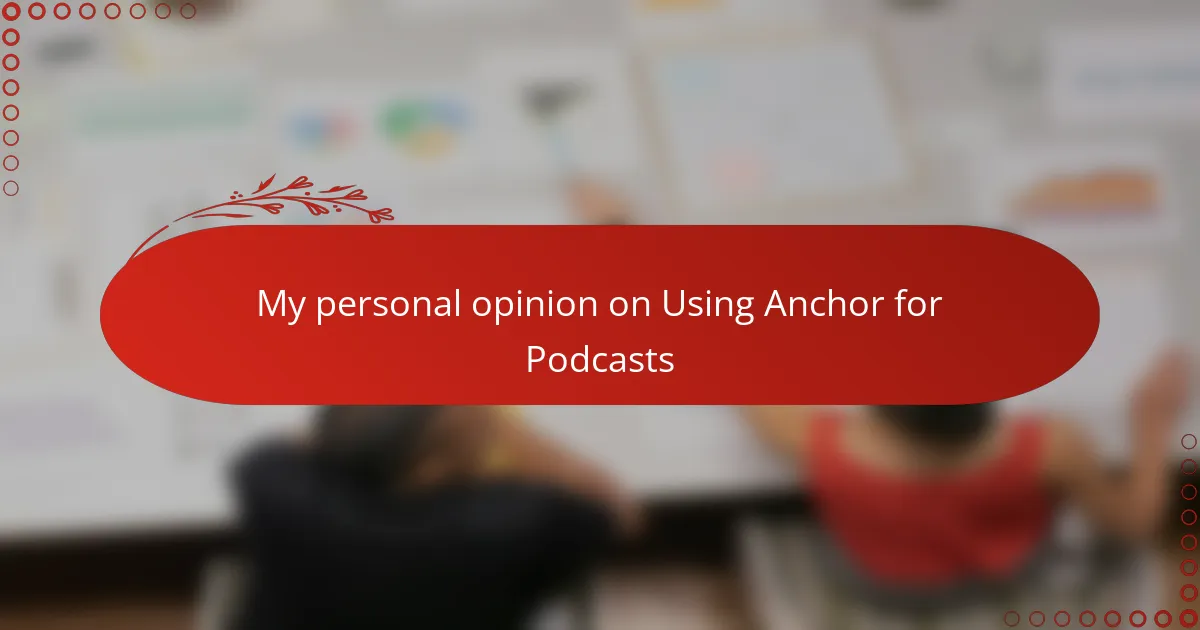Key takeaways
- Radio broadcasting involves converting sound into radio waves for widespread audio dissemination, enhancing listener connections through technical processes.
- Choosing the right podcasting platform is crucial for creators, as it impacts ease of access, audience growth, and overall podcasting experience.
- Anchor stands out for its user-friendly interface, automatic distribution, and integrated monetization options, simplifying the podcasting process for newcomers.
- Challenges with Anchor include limited advanced audio editing capabilities, total dependence on its distribution system, and unclear monetization pathways.
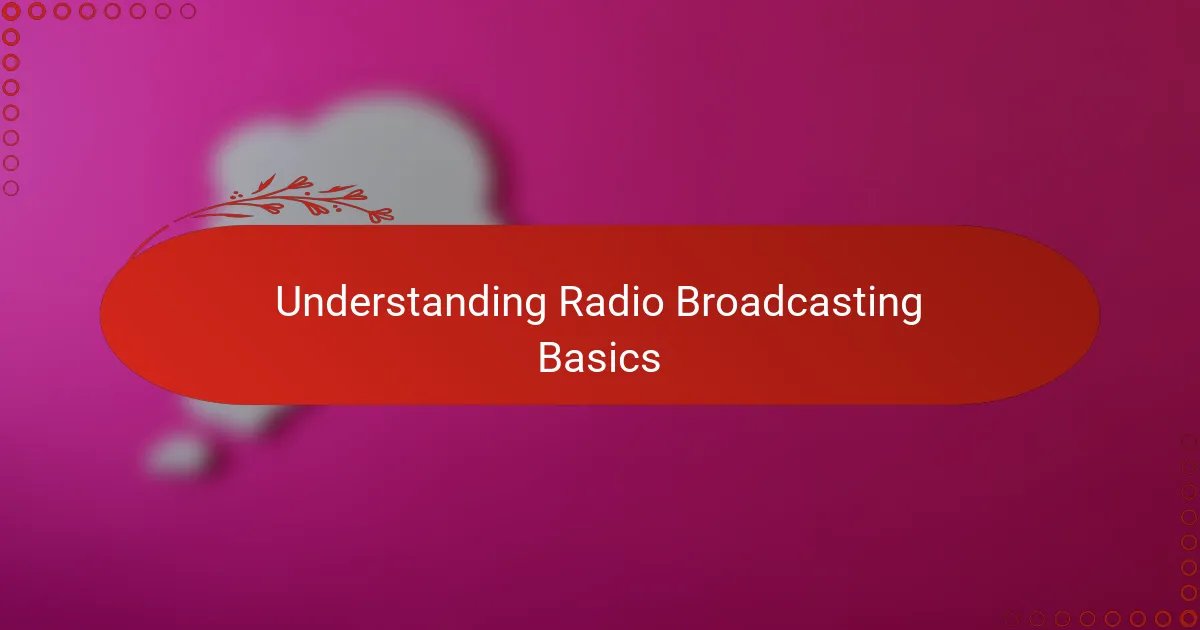
Understanding Radio Broadcasting Basics
Radio broadcasting, at its core, is about connecting voices to ears across distances. It’s fascinating to think that a simple signal can carry stories, music, or news to countless listeners simultaneously. When I first explored this world, I was amazed by how much technical setup goes behind what feels like effortless listening.
Have you ever wondered how radio programs reach your favorite device? It involves converting sound into radio waves, transmitting them through antennas, and then decoding them back into audio. This invisible journey is something I find both complex and incredibly rewarding—knowing that such a process can spark emotions or inspire change.
Understanding these basics helped me appreciate the craft before diving into podcasting. It’s not just about speaking into a microphone; it’s about mastering the art and science of sharing content that resonates. This foundation is what every broadcaster, including podcasters, builds upon to create a meaningful connection with their audience.
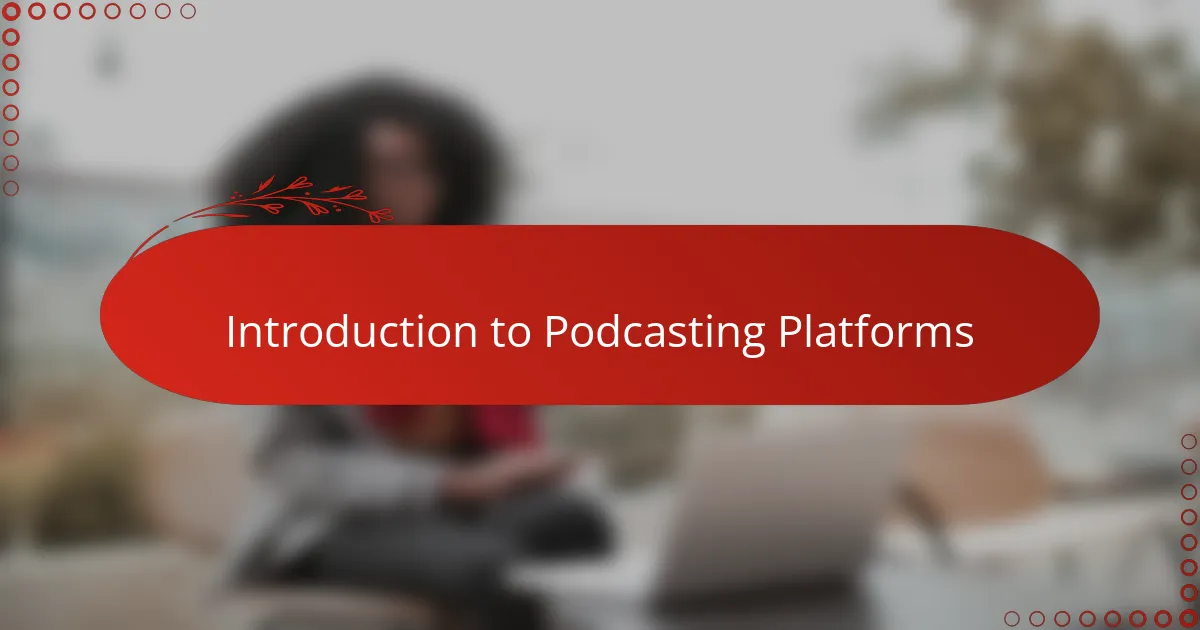
Introduction to Podcasting Platforms
Podcasting platforms are like the backstage crew that makes your favorite shows easy to find and listen to. I remember when I first started, the sheer number of options felt overwhelming—each with its features, strengths, and quirks. It made me realize that picking the right platform can shape not just how your podcast sounds, but how it grows.
Have you ever stopped to think about where your podcast “lives” once it’s recorded? These platforms host your audio files, distribute episodes across directories, and often provide tools to track listener habits. From my experience, understanding these roles helped me see podcasting as both a creative and technical journey.
At their core, podcasting platforms aim to bridge creators and audiences seamlessly. Some make uploading effortless, while others offer in-depth analytics or monetization options. Choosing the right one felt like finding a partner in my podcasting adventure—one that supports what I want to express and helps me reach listeners effectively.
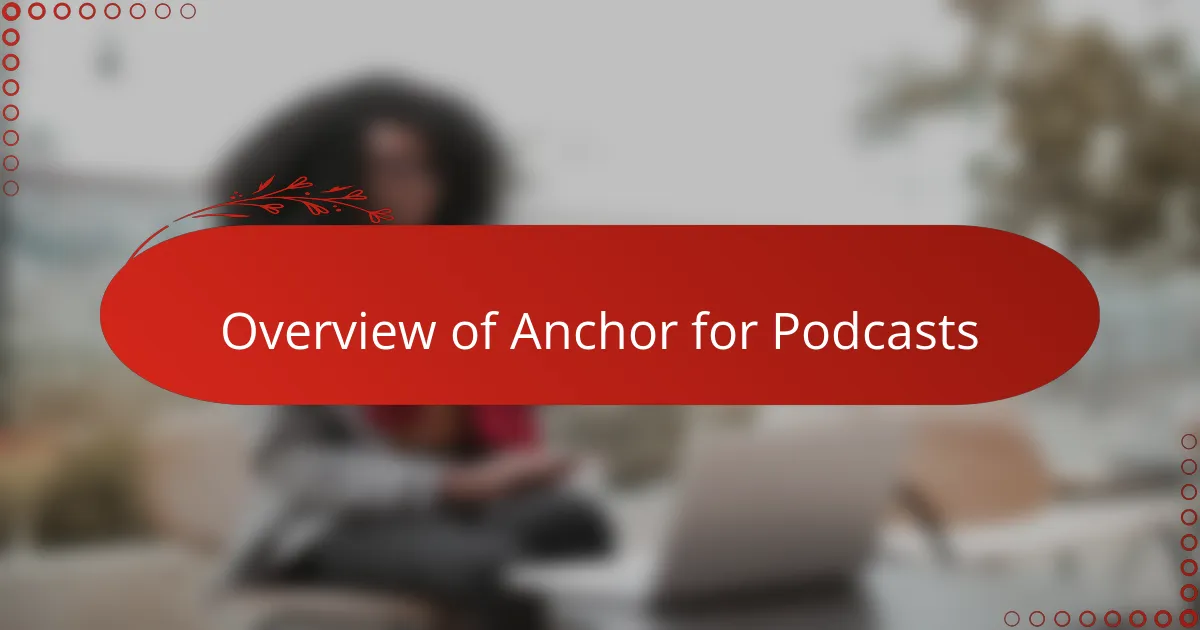
Overview of Anchor for Podcasts
Anchor for Podcasts stands out to me as a remarkably user-friendly platform that lowers the barrier to entry for anyone wanting to start podcasting. When I first used it, I appreciated how it simplified the entire process—from recording to publishing—without needing technical expertise. Have you ever wished for a tool that could handle hosting, distribution, and even monetization in one place? Anchor does just that, which makes the podcasting journey less daunting.
What strikes me most about Anchor is its seamless integration with major platforms like Spotify and Apple Podcasts. This meant that once I hit publish, my episodes were instantly available to a broad audience without extra effort. I found this especially useful in the early stages when building listeners quickly is crucial. Plus, the free hosting is a major bonus for creators just starting out.
From my perspective, Anchor’s simplicity doesn’t mean it lacks powerful features. It offers editing tools and analytics that provide meaningful insights into listener behavior. This combination helped me fine-tune my content based on real data rather than guesswork. Have you ever felt lost about who’s listening or how your episodes perform? Anchor’s approachable interface answered that question for me and kept me motivated to improve.
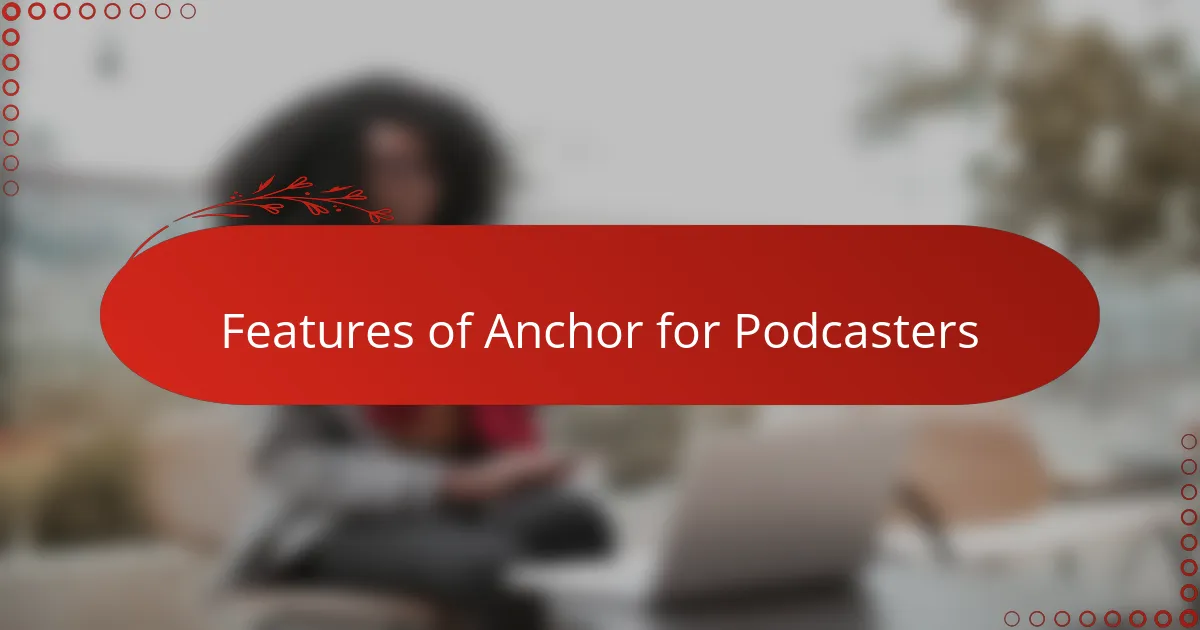
Features of Anchor for Podcasters
One feature of Anchor that immediately caught my attention was its built-in audio editing tool. As someone who’s not a professional editor, I often found myself struggling with complicated software. Anchor’s straightforward editor made trimming and mixing episodes feel surprisingly doable, which gave me more time to focus on content rather than technical headaches. Have you ever wished for a simple way to polish your podcast without learning a whole new program? This feature felt like a genuine gift.
Another aspect I truly value is Anchor’s automatic distribution. Uploading an episode once and having it sent everywhere—Spotify, Apple Podcasts, Google Podcasts—saved me countless hours. Early on, I was worried about missing out on audiences simply because I didn’t know how to get my show onto all these platforms. Anchor eliminated that worry completely, making the process feel seamless and built for creators like me.
Finally, the monetization options blew me away. It’s one thing to create content, but turning passion into income often feels like a different mountain to climb. Anchor’s listener support and sponsorship listings opened doors that I didn’t expect to find so easily. This feature made me feel that the platform truly supports podcasters at every stage—not just with tools, but with opportunities to grow financially too. Wouldn’t you agree that having that kind of backing makes all the difference?

Benefits of Using Anchor
Using Anchor really changed the way I approached podcasting by taking away the technical overwhelm. I remember feeling lost with complex audio programs before, but Anchor’s intuitive interface made recording and editing feel almost effortless. Have you ever felt that frustration of wanting to create but being held back by complicated tools? Anchor’s simplicity helped me focus on the content, which I now believe is what truly matters.
What truly impressed me about Anchor is how it handles distribution automatically. I used to spend hours uploading episodes individually to different platforms, worried I might miss out on potential listeners. With Anchor, one click was all it took to get my podcast on Spotify, Apple Podcasts, and more. For someone starting out, this kind of efficiency is invaluable and instantly boosts confidence in reaching a wider audience.
Monetization was another unexpected benefit that caught me off guard. Turning a passion project into something financially rewarding felt daunting, but Anchor’s integrated sponsorship and listener support features made it accessible. I found myself motivated not just to produce episodes, but to explore new ways to sustain my work, which made the entire podcasting journey feel more rewarding. Wouldn’t you say that having your platform support your growth like that removes a huge burden?
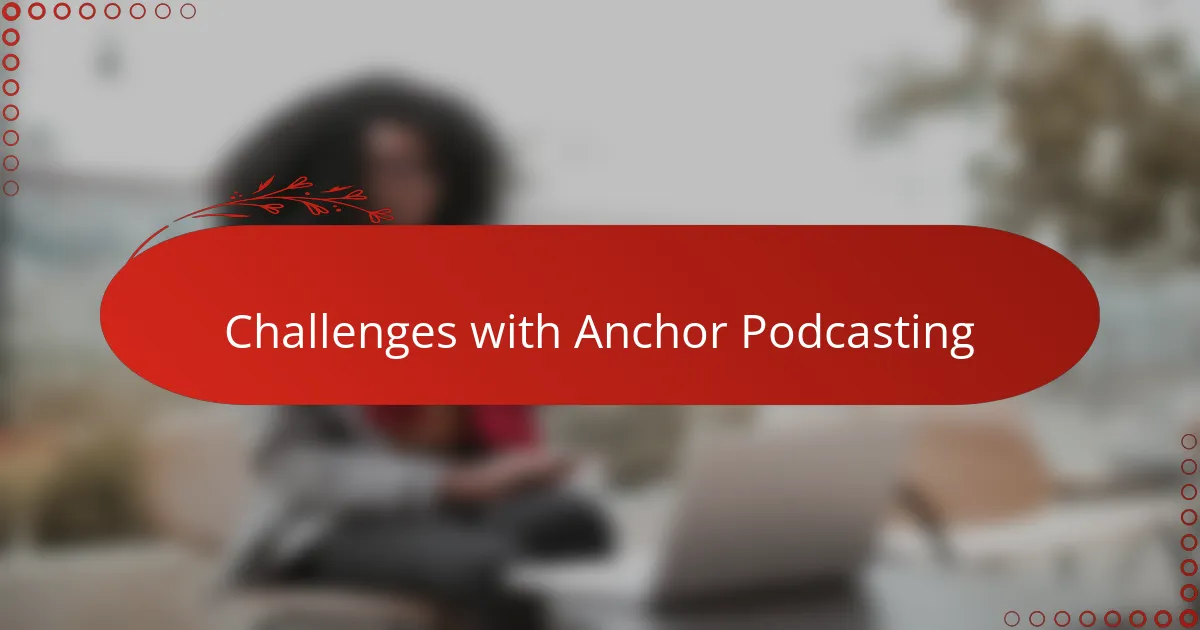
Challenges with Anchor Podcasting
One challenge I encountered with Anchor is its limited control over advanced audio editing. While the built-in tools are handy for basic trimming, I sometimes found myself wishing for more precise features to polish my episodes perfectly. Have you ever felt restricted by software that simplifies tasks but doesn’t let you dive deeper? That balance between ease and control can be tricky with Anchor.
Another aspect that caught me off guard was the dependency on Anchor’s distribution system. It’s convenient, no doubt, but I realized that if Anchor faces downtime or changes policies, it could impact how my podcast reaches listeners. Relying heavily on one platform made me question the long-term stability of my show’s availability—a concern worth considering if you’re serious about podcast growth.
Then there’s the matter of monetization transparency. Anchor offers sponsorship and listener support options, but from my experience, the pathway to meaningful earnings isn’t always clear or predictable. I found myself navigating vague thresholds and waiting periods, which sometimes felt discouraging. Have you ever wondered if the financial side of podcasting could be smoother? For me, it’s an area where Anchor could step up to better guide creators through their monetization journey.
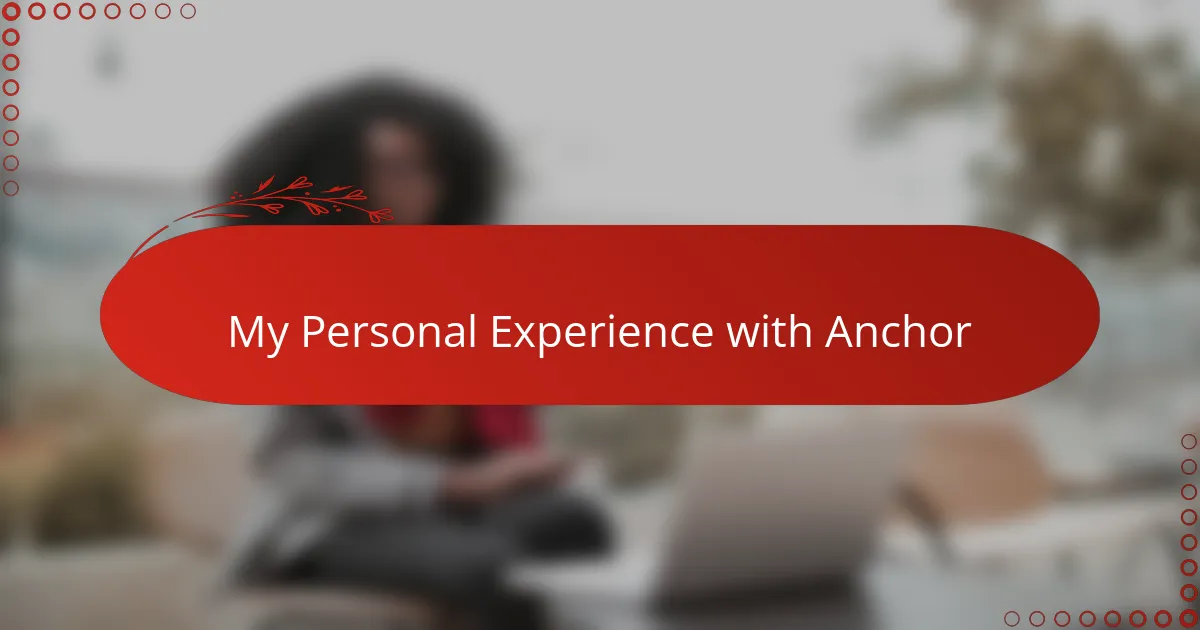
My Personal Experience with Anchor
When I first started using Anchor, I was impressed by how quickly I could go from idea to published episode. It felt like I had a whole podcast studio in my pocket, which made those initial steps less intimidating. Have you ever experienced that moment when a complicated process suddenly feels within reach? That’s exactly how Anchor worked for me.
There were times, though, when I wished for just a bit more control over the finer details of my audio. Editing within Anchor was straightforward, but I sometimes found myself craving more options to tweak sound quality or layer effects. It made me realize that while ease-of-use is key, creative freedom is something I didn’t want to sacrifice.
What really stuck with me was how Anchor helped me grow an audience without the usual headaches. I loved knowing that my episodes automatically landed on major platforms without extra effort. It gave me confidence to keep creating, knowing my voice was reaching ears around the world. Have you ever felt that boost from a tool that just “gets” what you need as a creator? For me, Anchor was exactly that partner in my podcasting journey.
